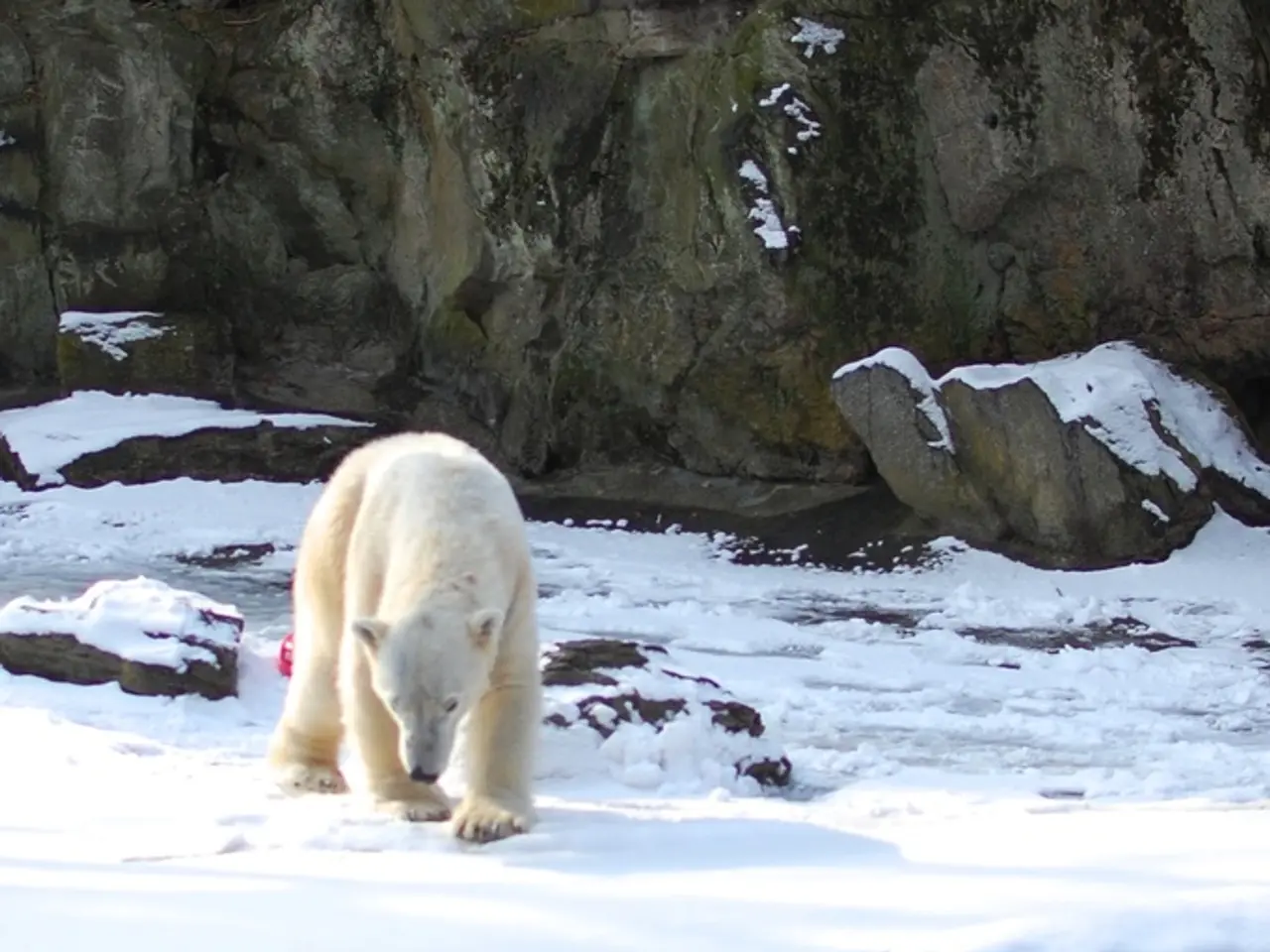Water-Resistant Landscaping: Crucial Design Components and Concepts
Transforming Your Landscape with Xeriscaping: A Guide to Drought-Tolerant Landscaping
Xeriscaping, the practice of creating water-efficient landscapes, is becoming increasingly important in hotter regions and areas with water restrictions. This approach emphasizes the use of drought-resistant plants, smart irrigation methods, and soil improvement to create attractive, sustainable, and low-maintenance landscapes.
Soil Preparation
The foundation of any successful xeriscape begins with the soil. To improve soil quality, add organic matter such as compost or peat moss to enhance moisture retention and soil health. Using mulches, both organic (wood chips, bark) and inorganic (gravel, stone), on soil surfaces can reduce evaporation and moderate soil temperature. Grouping plants with similar water needs together, a practice known as hydrozoning, optimizes irrigation efficiency.
Plant Selection
Choosing the right plants is crucial in xeriscaping. Opt for native or adapted drought-tolerant plants such as conifers, ornamental grasses, sedges, yuccas, agaves, succulents, herbs, prairie plants, Russian sage, Blue Grama grass, Autumn Joy sedum, and Penstemon. Incorporate drought evaders (plants that enter dormancy during drought) and water conservers (plants with adaptations to reduce water loss) to create a resilient landscape. It's essential to select plants suitable to your local climate and soil conditions for the best results.
Irrigation Methods
Efficient watering techniques are key to xeriscaping. Drip irrigation or soaker hoses deliver water directly to roots, minimizing waste. Water plants deeply but infrequently to encourage deep root growth. Rainwater capture systems, like rain barrels or rain gardens, can supplement irrigation when possible. Apply irrigation based on plant groups’ water needs, following the hydrozoning principle.
Design Considerations
Balancing landscaping and hardscaping helps create a harmonious design. Minimize or eliminate traditional lawns, replacing them with drought-tolerant groundcovers, gravel, rocks, or hardscape features. Decorative rock gardens and boulders not only add aesthetic appeal but also reduce water usage. Fall is an ideal time for planting in dry climates as cooler temperatures and soil moisture help plants establish better.
By combining these strategies, xeriscaping creates attractive, sustainable landscapes that thrive under heat and drought while conserving water and reducing maintenance. Whether you're in a hotter region or simply looking to save water, xeriscaping offers a practical and beautiful solution for your outdoor space.
[1] University of California, Agriculture and Natural Resources. (2015). Xeriscape: Water-Wise Landscaping. [Online]. Available: https://ucanr.edu/sites/wateruse/files/311072.pdf
[2] The Morton Arboretum. (2021). Drought-Tolerant Landscaping. [Online]. Available: https://www.mortonarb.org/gardens/learn-and-grow/gardening-advice/drought-tolerant-landscaping
[3] Colorado State University Extension. (2021). Xeriscape: Water-Wise Landscaping. [Online]. Available: https://extension.colostate.edu/topic-areas/water/xeriscape-water-wise-landscaping-10374/
[4] Texas A&M AgriLife Extension Service. (2021). Xeriscaping. [Online]. Available: https://aggie-horticulture.tamu.edu/galveston/horticulture/xeriscape/
[5] The National Xeriscape Council, Inc. (2021). Xeriscape Principles. [Online]. Available: https://www.xeriscape.org/xeriscape-principles/
- In environmental-science and home-and-garden disciplines, a xeriscape design can incorporate native or adapted drought-tolerant plants such as conifers, ornamental grasses, agaves, yuccas, and sedums to create a resilient and water-efficient landscape, as recommended by The National Xeriscape Council, Inc.
- To maintain a xeriscape lifestyle, consider implementing sustainable irrigation methods, like drip irrigation or soaker hoses, and efficient watering techniques, such as watering plants deeply but infrequently, as suggested by the University of California, Agriculture and Natural Resources.




